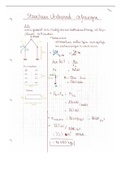Samenvatting
summary evolutionary psychology
- Vak
- Instelling
- Boek
extensive notes and summary for the course evolutionary psychology. I made the summary using the book and the lecture slides, and I incorporated all the learning adjectives. Will be updated as soon as all the lectures are finished!
[Meer zien]













